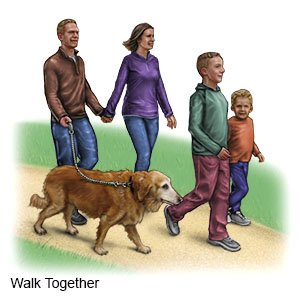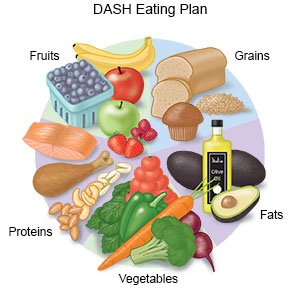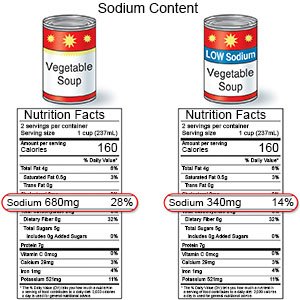Hypertension in Children
Medically reviewed by Drugs.com. Last updated on Apr 6, 2025.
What is hypertension?
Hypertension is high blood pressure (BP). Your child's BP is the force of the blood moving against the walls of the arteries. Hypertension causes your child's heart to work much harder than normal. This can damage his or her heart. High BP in childhood increases the risk for hypertension and cardiovascular disease as an adult. A controlled BP helps protect your child's organs, such as his or her heart, lungs, brain, and kidneys.
What causes or increases my child's risk for hypertension?
- A family history of hypertension
- Not enough physical activity
- Having overweight or obesity
- Certain conditions such as kidney disease
What are the signs and symptoms of hypertension?
Your child may have no signs or symptoms, or any of the following:
- Chest pain or palpations (changes in your child's heartbeat)
- Headache
- Changes in vision
- Dizziness or tiredness
How is hypertension diagnosed and treated?
Your child's BP will be compared with BP of other children his or her age, height, and weight. If your child's BP is high, it will be checked again at later visits. Your child may have hypertension if he or she has high BP during the visits. The cause of your child's high BP may need to be treated. If no cause is found, treatment usually starts with lifestyle changes. Your child may need medicines if lifestyle changes do not work. Your child's healthcare provider may recommend any of the following, based on your child's needs:
- Help your child lose weight if needed. Your child's healthcare provider can tell you what weight is healthy for your child. The provider can help create a weight loss plan if needed. Even a small amount of weight loss can make a big difference for your child's BP.
- Encourage your child be active. Most children need at least 60 minutes of physical activity each day. This will help decrease your child's BP and help him or her maintain a healthy weight. Help your child find an activity he or she enjoys.

- Follow the meal plan recommended by your child's healthcare provider. You will be given more information on the Dietary Approaches to Stop Hypertension (DASH) eating plan. The DASH eating plan encourages eating fruits, vegetables, and whole grains. You may also meet with a dietitian to create a meal plan to fit your child's needs.

- Limit sodium (salt) as directed. Too much sodium can affect your child's fluid balance. Check labels to find low-sodium or no-salt-added foods. Some low-sodium foods use potassium salts for flavor. Too much potassium can also cause health problems. Your child's healthcare provider will tell you how much sodium and potassium are safe for your child to have in a day.

- Help your child create a sleep routine. Problems with sleep can increase your child's risk for hypertension, or make it worse. Ask your child's healthcare provider for the recommended amount of sleep for your child's age. Have your child go to sleep and wake up at the same times each day. Do not let your child use electronic devices or watch TV for at least 1 hour before bed.
Treatment options
The following list of medications are related to or used in the treatment of this condition.
What can I do to help manage my child's hypertension?
- Check your child's BP at home, if directed.
- Use the right size cuff for your child. Your healthcare provider can check to make sure the cuff fits properly. Follow the directions that came with the BP monitor.
- Have your child sit and rest for 5 minutes before you take his or her BP. Extend your child's arm and support it on a flat surface. Your child's arm should be at the same level as his or her heart.
- You may be asked to check your child's BP more than 1 time each day. Choose the same times each day. Keep a record of your child's BP readings and bring it to your follow-up visits. Ask your healthcare provider what your child's BP should be.

- Manage any other health conditions your child has. Health conditions such as kidney disease or diabetes can increase your child's risk for hypertension. Your child's provider may recommend tests for obstructive sleep apnea or other problems that can keep your child from sleeping well. Follow all instructions from your child's healthcare providers.
Call your local emergency number (911 in the US) if:
- Your child has chest discomfort that feels like squeezing, pressure, fullness, or pain.
When should I call my child's doctor?
- Your child has a severe headache or vision changes.
- Your child has changes in the amount he or she urinates.
- Your child's urine is dark or tea-colored.
- Your child becomes short of breath with very little activity.
- Your child has swelling in his or her hands or feet.
- Your child's BP is higher than it should be, even with BP medicine.
- You have questions or concerns about your child's condition or care.
Care Agreement
You have the right to help plan your child's care. Learn about your child's health condition and how it may be treated. Discuss treatment options with your child's healthcare providers to decide what care you want for your child. The above information is an educational aid only. It is not intended as medical advice for individual conditions or treatments. Talk to your doctor, nurse or pharmacist before following any medical regimen to see if it is safe and effective for you.© Copyright Merative 2025 Information is for End User's use only and may not be sold, redistributed or otherwise used for commercial purposes.
Learn more about Hypertension
- Do blood pressure drugs interact with alcohol?
- FDA-Approved Weight Loss Drugs: Can They Help You?
- Which Drugs Cause Weight Gain?
Treatment options
Symptoms and treatments
Medicine.com guides (external)
Further information
Always consult your healthcare provider to ensure the information displayed on this page applies to your personal circumstances.
